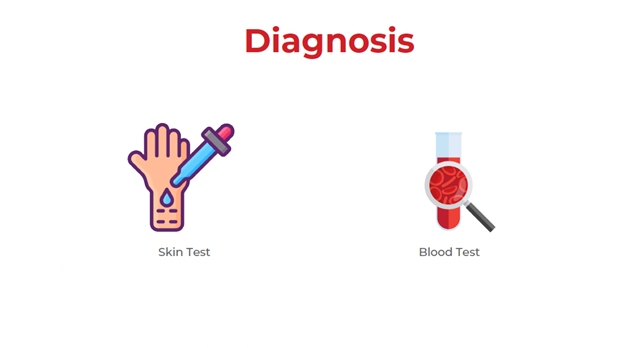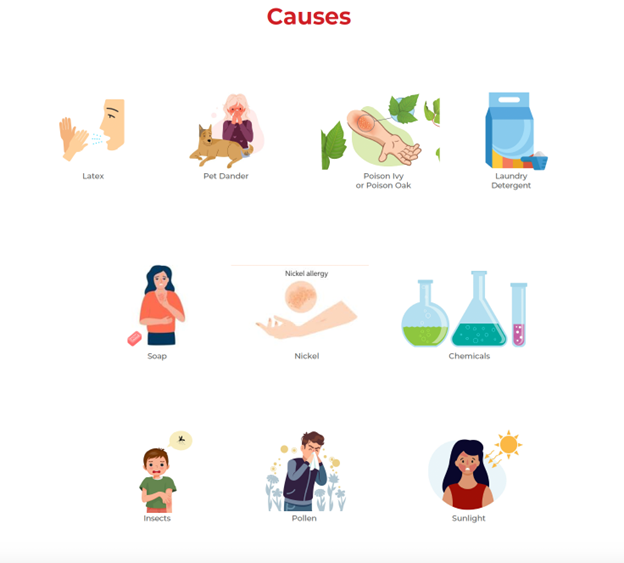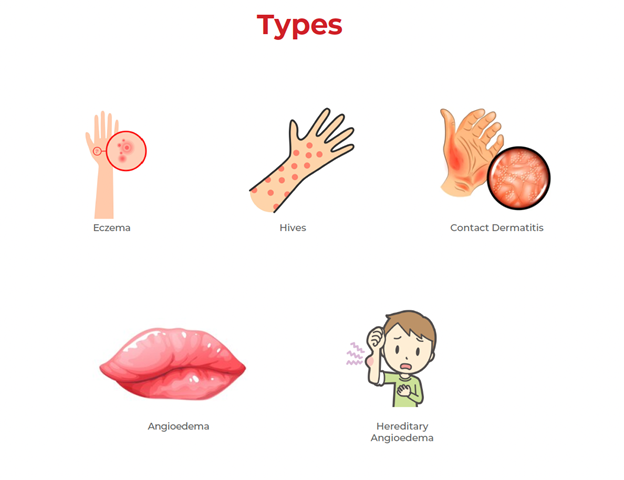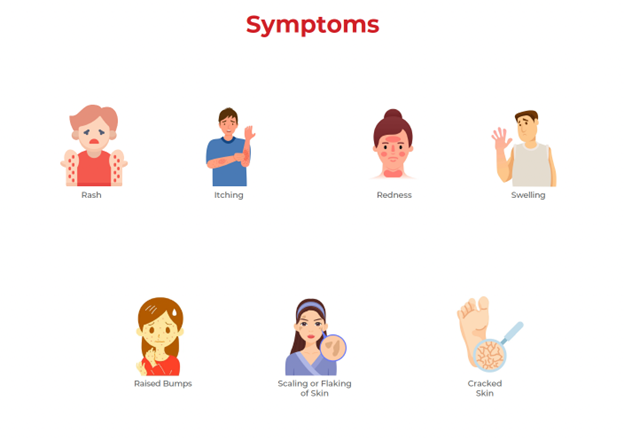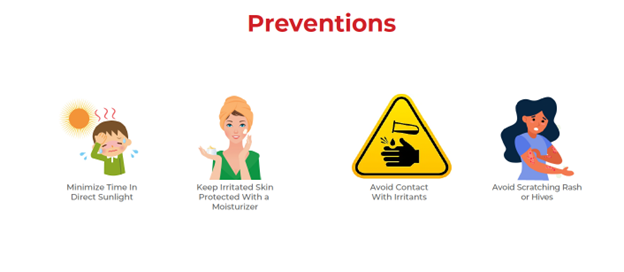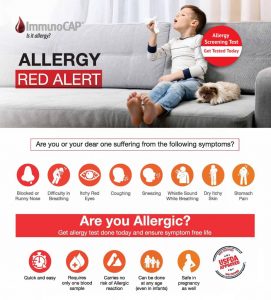Skin Allergies – Types, Symptoms, Causes, and Diagnosis
Skin Allergies – Overview
Allergies are one of the most common chronic diseases. 30% of the population in India suffers from some form of allergy.
Allergy is an immune response to substances that are usually harmless. The substances that cause allergic reactions are Allergens. The common Allergens are
- Animals, especially furry animals
- Food, such as milk, gluten
- Pollen
- Bites of wasps and bees
- Pollution and Dust
- Mites and Molds
- Household chemicals and sprays
- Certain medication

Skin allergies are a reaction to an allergen or irritant and can be caused by a variety of factors. When an allergen is responsible for triggering an immune system response, then it is an allergic skin condition.
During an immune system response, the body makes an antibody called immunoglobulin E (IgE). These antibodies respond to allergens. The symptoms that result are an allergic reaction.
What are the causes of Skin Allergy?
Triggers that can lead to skin allergy include:
- Latex
- Pet dander
- Poison ivy or poison oak
- Laundry detergent
- Soap
- Nickel
- Chemicals
- Insects
- Pollen
- Sunlight
What are the types of Skin Allergy reactions?
The most common types of skin allergy reactions are:
- Eczema: Eczema, also known as atopic dermatitis, is the most common skin condition, especially in children. A common symptom of eczema is dry, red, irritated, and itchy skin. Eczema is often linked with asthma, allergic rhinitis (hay fever), or food allergy.
- Hives: Hives (urticaria) are red bumps or welts that appear on the body. The condition is called acute urticaria if it lasts for no more than 6 weeks, and chronic urticaria if it persists beyond 6 weeks. Acute urticaria is most commonly caused by exposure to an allergen or by an infection. Acute urticaria can also be triggered by non-allergic causes such as heat or exercise, as well as medications, food items such as peanuts, tree nuts, shellfish, insect bites, or infections.
- Contact Dermatitis: Contact Dermatitis is a reaction that appears when the skin comes in contact with an irritant or an allergen. Symptoms can include a rash, blisters, itching, and burning. Soaps, laundry detergents, fabric softeners, shampoos, nickel, adhesives, nail polish, and latex gloves can all cause contact dermatitis.
- Angioedema: Angioedema is swelling in the deep layers of the skin and many times occurs in soft tissues such as the eyelids, mouth, or genitals. It is often seen together with urticaria (hives). Angioedema is called acute, if the condition lasts only a short time such as minutes to hours. Acute angioedema is commonly caused by an allergic reaction to medications or foods. Chronic recurrent angioedema is when the condition returns over a long period.
- Hereditary Angioedema: Hereditary angioedema is a rare, but serious genetic condition involving swelling in various body parts including the hands, feet, face, intestinal wall, and airways.
What are the symptoms of Skin Allergy?
A skin rash is the primary symptom of an allergic skin reaction.
The rash may start as an itching sensation, a raised bump, redness, or any combination of:
- Rash
- Itching
- Redness
- Swelling
- Raised bumps
- Scaling or flaking of skin
- Cracked skin
What are the tips to prevent Skin Allergy?
The following tips can be utilised to take control of Skin Allergy:
- Minimize time in direct sunlight
- Keep irritated skin protected with a moisturizer
- Avoid contact with irritants
- Avoid scratching rash or hives
How is Skin Allergy diagnosed?
If you see any of the symptoms of Skin Allergy, speak to your doctor today.
The doctor will consider your family, medical history, and your symptoms and may recommend the following tests to make a diagnosis.
- Skin test. Your skin is exposed to small amounts of the proteins found in potential allergens. If you’re allergic, you’ll likely develop a raised bump (hive) at the test spot on your skin.
- Blood test. Measures the amount of allergy-causing antibodies in your bloodstream, known as immunoglobulin E (IgE) antibodies.
